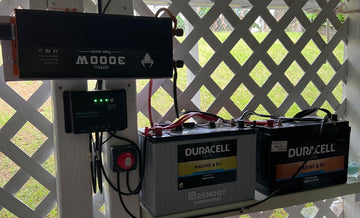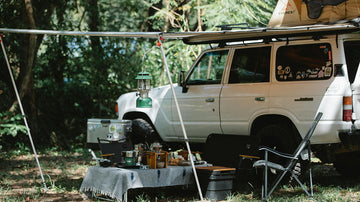Today, camping is undoubtedly the best way to isolate yourself from the outside world, get close to nature and slow down the pace of life. However, with the advancement of technology and the popularity of portable electronic devices, the need for electricity has increased. As a popular accessory for modern camping, solar panels have greatly improved the camping experience. Seasoned campers know that if you carry a quality solar panel designed for camping and outdoor environments, you can get off the grid without having to give up your electronic devices. You can enjoy the same comforts and conveniences as you would at home while getting in touch with nature.
Fortunately, there are a wide variety of solar panels available on the market today. However, with the wide array of options available, how should we make an informed choice? The purpose of this article is precisely to help you better understand solar panels and make the right choice to ensure that your camping trip is both productive and environmentally pleasant.
Types of Solar Panels for Camping
To choose the right solar panel for camping, you first need to understand the different types. There are three main types of solar panels for camping: monocrystalline, polycrystalline and thin film solar panels.
Monocrystalline solar panels
Monocrystalline solar panels are one of the most common and efficient types of solar panels, made from a single crystalline silicon wafer, offering high conversion efficiency and excellent performance. They are usually able to convert 15% to 25% of solar energy into usable energy and produce good power output even in low light conditions. These solar panels are usually on the expensive side, but have a long lifespan and high durability, making them suitable for long-term outdoor environments.
Polycrystalline silicon solar panels
Polycrystalline silicon solar panels, which consist of multiple crystalline structures, typically have conversion efficiencies between 13% and 18%, which is slightly lower compared to crystalline silicon. They are considered a cost-effective option by many campers due to their relatively low manufacturing costs.
Thin-film solar panels
Thin-film solar panels have the highest degree of flexibility and bendability, making them lightweight and most portable. Its conversion efficiency is usually between 6% and 12%, much lower than the other two types. On the other hand, they are preferred for camping trips because they are portable and less expensive to manufacture.
| Feture | Mono | Poly | Thin-film |
| Efficiency | High | Middle | Low |
| Cost | High | Middle | Low |
| Lifespan | Long | Medium | Short |
| Weight | Heavy | Medium | Light |
Fixed Solar Panels vs Portable Solar Panels

Fixed and portable solar panels vary in camping options due to different power needs and nature of the trip.
Fixed solar panels
Fixed solar panels are a reliable option and they can be securely mounted on the roof of your caravan, boat or 4x4 vehicle. This means that you can easily absorb sunlight and convert it into electricity while traveling or while parked in a sunny spot. The advantage of these fixed solar panels is that they can be seamlessly integrated into the roof space of your vehicle to meet most power needs without having to set them up once you arrive at your destination.
However, it is important to note that when these fixed solar panels are placed flat on the roof of the vehicle, they may lose around 20% or so of their daily power generation if they are not exposed to direct sunlight. This is because solar panels need to receive direct sunlight to work optimally. Therefore, when choosing a mounting location, make sure that the fixed solar panel can be exposed to sunlight and avoid being covered by shadows or blocked by other objects.
In addition, to maximize the use of solar energy, you may also want to consider using an adjustable mount or tracking system that allows the solar panels to adjust to the position and angle of the sun. This will increase the efficiency of power generation and reduce energy loss due to changes in the angle of the sun's rays.
Portable solar panels
Portable solar panels offer greater flexibility and can be placed strategically in terms of optimizing sunlight. They have the ability to track the sun and adjust to its position and arc to ensure maximum power from the solar panels. By using cables to connect the portable solar panels to a battery, you can easily store the power generated.
This "chasing the sun" feature allows you to maximize the energy output of your solar panels. Whether you're camping, hiking, or doing other outdoor activities, you can position your portable solar panel at the optimal angle for the sun's position. This way, even if the sun's position is constantly changing, you will still get the maximum amount of sunlight, thus producing more electricity.
Note that using portable solar panels requires extra time for setup and packing, as you will need to travel to different locations depending on the position of the sun.
What To Consider When Buying Camping Solar Panels?
- Power Output: Determine your power needs and choose camping solar panels with the appropriate power output. Consider the devices you plan to charge or power during your camping trip, such as smartphones, tablets, laptops, lights or portable refrigerators. Check the wattage or power rating of the solar panel to make sure it will meet your requirements.
- Portability: look for camping solar panels that are lightweight, small and easy to transport. Portability is crucial for outdoor activities as you need to carry the solar panel with you. Consider a foldable or rollable design so that it can be packed efficiently and take up less space.
- Efficiency: the ability of a solar panel to convert a certain amount of sunlight into usable electricity to charge a device. Different types of solar panels have different efficiencies. A higher efficiency rating means that the same amount of sunlight will provide more energy.
- Charging Options: Check to see if your camping solar panel has a built-in charging port or if you need an additional battery or batteries to store energy. A built-in USB port or DC output can make charging the device easier.
- Durability: Camping solar panels should be able to withstand outdoor conditions, including rain, dust and temperature changes. Look for panels with sturdy construction and waterproof, durable materials. Panels with reinforced frames or protective coatings are ideal for camping use.
- Compatibility: Make sure the camping solar panel is compatible with your equipment. Depending on your device's requirements, check if it supports the necessary charging ports, such as USB ports, DC outputs or AC inverters.
- Add-ons: Consider add-ons that can enhance the usability of your camping solar panel, such as a built-in kickstand or mounting option for easy installation, a built-in charge controller for efficient power management, or compatibility with solar panel expansion kits for increased power output.
Which Solar Panel Size Is Necessary for Camping?
The necessary solar panel size for camping depends on your power requirements and the devices you plan to charge or power during your camping trips.
Calculate Your Power Needs:
Begin by assessing the power consumption of the devices you will be using during your camping trip. Make a list of the devices you plan to charge or power and note their power or wattage ratings. Add up the power requirements in watt-hours (Wh) to determine the total amount of power you will need for a typical day.
For example, the devices that need to be used each day are a tent light, cell phone charger, portable refrigerator, and laptop computer, which need to be used for 4/1/8/3 hours, respectively. The total daily energy loss can be calculated:
Tent light: 5 w × 4 h = 20 (Wh)
Cell phone charger: 10 w × 1h = 10 (Wh)
Portable refrigerator: 40 w × 8 h = 320 (Wh)
Laptop: 60 w × 3 h = 180 (Wh)
20 + 10 + 320+ 180= 530 (Wh)
Consider sunlight hours:
Consider the average amount of sunlight in your camping area. If you will be camping in an area that receives a lot of sunlight, you may need smaller solar panels than if you will be camping in an area that receives less sunlight.
Panel Efficiency:
Different solar panels have different efficiencies in converting sunlight into electricity. More efficient solar panels produce more electricity for a given surface area. Consider the efficiency rating of your solar panels, as it may affect the size needed to meet your power needs.
Allow time for charging:
Keep in mind that solar panels generate electricity during the day. To ensure you have enough power for your camping needs, factor in daily charging time. If daytime hours are limited, you may need a larger solar panel to compensate for shorter charging times.
Power storage:
Determine if you need to store energy for use on non-sunny days or at night. If you plan to charge your device directly from the solar panel during the day, a smaller panel may be sufficient. However, if you need to charge batteries or accumulators to store energy, a larger panel may be needed to generate enough energy for storage.
Best Solar Panels for Camping Under $200

- Highly efficient conversion: Unique bypass diode design minimizes power loss due to shading
- Small and lightweight: 35.6 x 25.9 x 1.18 inches per 100W polycrystalline solar panel
- Easy to connect: comes with 2 feet of cable and plugs
- Wide Compatibility: This 200W polycrystalline solar panel is compatible with a variety of mounting systems such as Z-frames, pole mounts, and tilt mounts for excellent adaptability and flexibility.
Best Solar Panels for Camping Under $400

- Improved efficiency: Transparent double-sided backsheet design improves efficiency by at least 5%.
- 10BB Solar Cells Technology: Higher shading resistance and far more power generation than typical 5BB solar cells.
- Convenient Installation Design: Each 12V solar panel is pre-drilled to make the installation process easy.

















